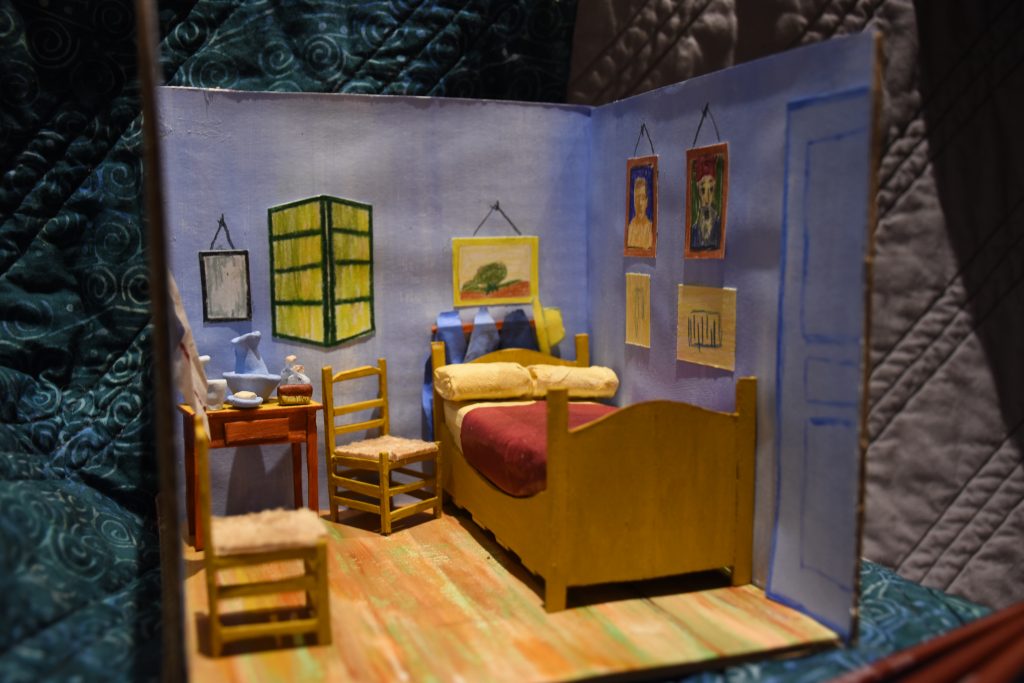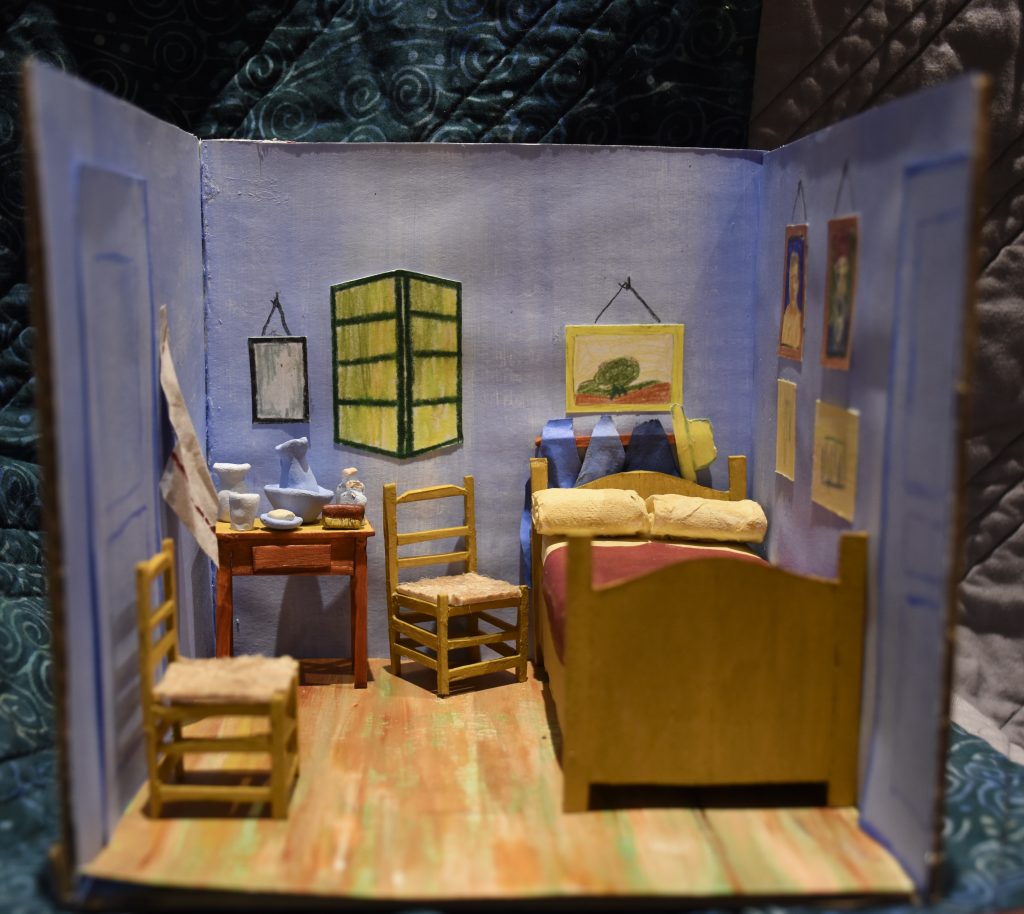Dutch Post-Impressionist artist Vincent Van Gogh painted “Bedroom in Arles” in 1888, when he was renting a room in Arles, France, at a home dubbed the Yellow House. Van Gogh explained:
“Colour must be abundant in this part, its simplification adding a rank of grandee to the style…suggest[ing] a certain rest or dream.”
He deliberately skewed the perspective and flattened the interior, hoping to resemble a Japanese print. He believed colours expressed something beyond the description.
Tobin Eckstein


Miniature dioramas have always been a point of child-like fascination and respect for me. The ability to compose a location or moment in time within a ~1:24 scale is highly commendable. When I lived in Victoria, I unfortunately never got the chance to visit Miniature World, but one day I will get there! When reading the Historical Artifact brief I thought it would be a great chance to explore my love for tiny architecture. After weighing my options, I decided to recreate “Bedroom in Arles” by Vincent Van Gogh.
I was lucky enough to come across a couple of miniatures other people had made, which gave me a nice point of reference in regards to ratio and materials. Minus the clay, popsicle sticks, sponge, and Weldbond glue, I already owned all of the items I needed, so the project was inexpensive and accessible to create. The materials I used are listed here: scissors, hobby knife, cutting mat, cardboard, popsicle sticks, Weldbond glue, rubber cement glue, twine, acrylic paint, toilet paper, cardstock, pencil crayons, clay, a sponge, and fine liner. Cardboard is a pretty obvious choice for the framework; it’s flexible, yet structurally sound with some light reinforcement. Cardstock paper was able to handle a light coat of paint without warping for the walls and floor, and when crinkled it worked perfectly as fabric. I wanted to use popsicle sticks for the furniture because, for one, the furniture portrayed in the painting is wood, and secondly, it is lightweight and easy to glue. I used a sponge for the mattress, to give some height and a surface to place the pillows and blankets on. The pillows are made of toilet paper, as it was the plushiest material I could think to use that easily rolled up. The clay items on the table give some nice texture and dimension, as well as provide me with a chance to try a new medium! Everything else, such as the paintings and doors, were mainly a stylistic choice.
I would give myself full marks for this project. I am incredibly proud of both my effort and the final product. Moving forward, I would like to explore this art form further, and maybe I’ll even get a comission at some point!



